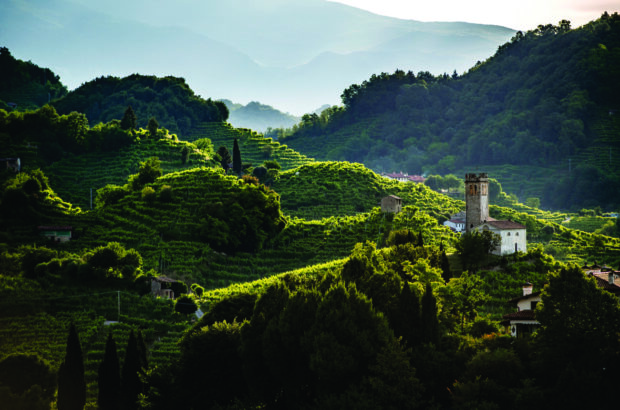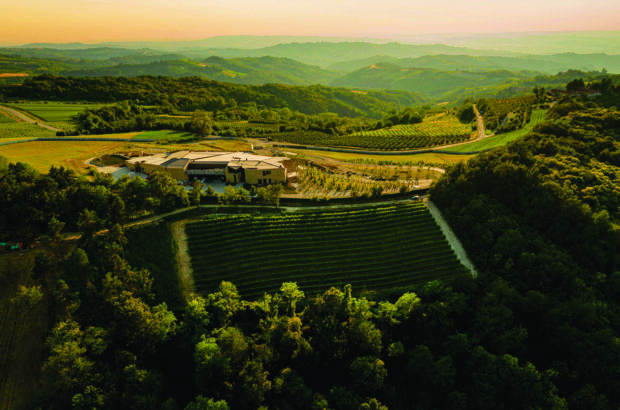Spanish grapes in South Africa
Julie Sheppard
Winemaker Rudiger Gretschel is production director at South African giant Vinimark, the country’s biggest independent wine wholesaler, and also cellar master at top names Reyneke and Krone. But when we met in London recently, it was his personal project Swartberg Wingerde that grabbed my attention. Vines are planted at the foot of Swartberg mountain in rugged Piekerneerskloof in the Western Cape, an area better known for its citrus and rooibos tea farms. Gretschel joyfully explained that the estate, a place of untamed natural beauty, is off-grid, with no mains electricity. The wines reflect this unique place: from Sangiro Pinotage 2021 (£42.81 Lay & Wheeler) – a fresh style packed with crunchy raspberry fruit that puts the ‘Pinot’ in Pinotage – to Miracle Bush 2021, a herbal, smoky, juicy blend of Syrah, Grenache Noir and Pinotage. But it was the Holism range, made with Spanish grapes, that knocked my socks off. The inaugural vintage of Holism Garnacha 2021 (£28 Bottle Apostle, Cellar Door Wines) is a vibrant, elegant example that reminded me of new-wave Garnachas from Spain’s Sierra de Gredos. Meanwhile the Holism Palomino 2021 (£26 Wines with Attitude), made from dry-farmed vines planted in 1964, is distinctively delicious with its mix of floral, herbal, citrus, mineral and salty notes. An original: snap it up before I do.
Lenz Moser’s blind ambition
Tina Gellie
Fifth-generation Austrian winemaker Lenz Moser was in London in March to pit his wines blind against some of his favourite global references. The focus was on whites and sweets, with Moser joined by Master Sommelier Stefan Neumann to challenge industry experts and show that wines from lesser-known regions can stand up with the world’s best. In the end, seven Moser wines were revealed among the 16 tasted.
The dry MM5 and MM55 Furmints (both 2021, £21.99 and £40.65 respectively at The Fine Wine Co) from his Ma’d Moser project in Hungary’s Tokaj region, as well as the New Chapter Grüner Veltliner 2022 from Lenzmark (Moser’s joint project with Markus Huber) in Austria’s Niederösterreich region, performed well against Grüner from FX Pichler, Sonoma Coast Chardonnay from Kistler and Clos Saint Urbain Pinot Gris from Zind Humbrecht in Alsace. While improving each vintage, the 2021 Cabernet Sauvignon Blanc de Noir (£17.05 Vinvm) from his Chinese estate Changyu Moser XV wasn’t of the same calibre. By contrast, Changyu’s Gold Diamond Vidal Ice Wine 2021, as well as the MM555 Tokaji Aszú 6 Puttonyos 2013 – a project between Ma’d Moser and Grand Tokaj – held their own alongside sweet classics including Sauternes from Châteaux d’Yquem and de Fargues, as well as a Kracher Beerenauslese from Austria.
Poland’s emerging wine scene
Amy Wislocki

Being half-Polish myself, I was curious to find out more about the country’s wines at an event for Polish Wine Day held at the Polish embassy in London (I confess that before the event I knew absolutely nothing and had never tasted a single example). Wine journalist Maciej Nowicki gave a brief background, before a walk-around tasting that saw 10 of Poland’s leading producers pour their wines for guests.
Vines have been planted in Poland since the 10th century, but the first completely privately owned vineyard was established as recently as 1982, by Roman Mysliwiec, and the official sale of Polish wine didn’t begin until 2009. Fast forward to today and there are more than 607 wine-growers and producers, cultivating about 1,000 hectares of vineyards. There are as yet no official wine appellations, but many important vineyards are concentrated in the Lower Silesia area. Many producers are choosing the hardy Piwi varieties (fungus-resistant hybrids), but there are also plantings of international varieties, including Riesling, Pinot Blanc and Chardonnay. Many of the wines on show aren’t yet exported, but independent wine merchant Central Wines imports a selection of Polish wines into the UK.
Highlights from Greece
Sylvia Wu
The annual Wines of Greece trade tasting in London is one of the best opportunities to encounter the nation’s rich wealth of indigenous grape varieties, and here are just a few of my surprise finds in the 2024 event. Kydonitsa is rumoured to take its name from the Greek word for ‘quince’. Monemvasia Winery’s fresh 2023 take on the grape exudes mango peel and, indeed, quince on the nose; the palate satisfies with a vinous, rounded body (£16.10-£17.25 Shelved Wine, Strictly Wine). The Tselepos, Blanc de Gris 2023 (£21 Cava Spiliadis), made using the pinkish Moschofilero, does not disappoint with its ‘moscho’ lychee blossom, paired with peppery citrus and a zesty finish. Diamantakos Winery prides itself on preserving the near-extinct, Naoussa-originated Preknadi grape. The 2022 vintage showcases ripe peach and rose, a lick of minerality and an oily weight (£22 Clark Foyster).
More often seen in fortified sweet wines, Mavrodaphne boasts 16% alcohol in the Castro Clauss, MTR 2020, though the incredible concentration is well seasoned by Mediterranean spices, balsamic and creamy oak. Avantis, Mavrokoudoura 2019 (£21.99 Virgin Wines), a grape native to Evia, has raspberry jam, sweet vanilla and red rose fragrances, and the palate is saline, juicy and long. From Crete, the Liatiko grape, in its dry form, takes on a pale hue in the Diamantakis, Petali 2020, charming with a savoury tone layered over red berry flesh (£16.95-£17.50 Caviste, Salusbury Winestore, WoodWinters, Vino Gusto). Follow @greekwineuk on Instagram for updates on Greek Wine Month in June.
The Festa started – and is still going
Ines Salpico

Max Graham. Credit: Jason Bailey Photography
When Max Graham, member of the storied Port family and founder of London’s popular Bar Douro, decided to create a festival to celebrate the best Portuguese producers and the country’s exciting food and wine scene, little did he know that the project would develop a life of its own. After realising that some of the most interesting wines showcased at the event – aptly named Festa – were not available in the UK, Graham decided to start an importing and online sales business under the same name. Festa has since added a trade sales arm to its operations and is currently bringing some of Portugal’s most exciting bottles to British shores. At Festa’s latest portfolio tasting, standouts included the incredibly mineral Arinto dos Açores dry white Efusivo 2022 (£41), a journey to the Azores in a single sip; Titan of Távora-Varosa, Daemon 2020 (£29.50), a deep, complex and briny white blend that puts Burgundy in the shade; and João Clara’s Negra Mole 2020 (£42.78), a superb red that shows the untapped potential of Algarve’s wines. But there are so many other outstanding wines to explore – Saúde!












